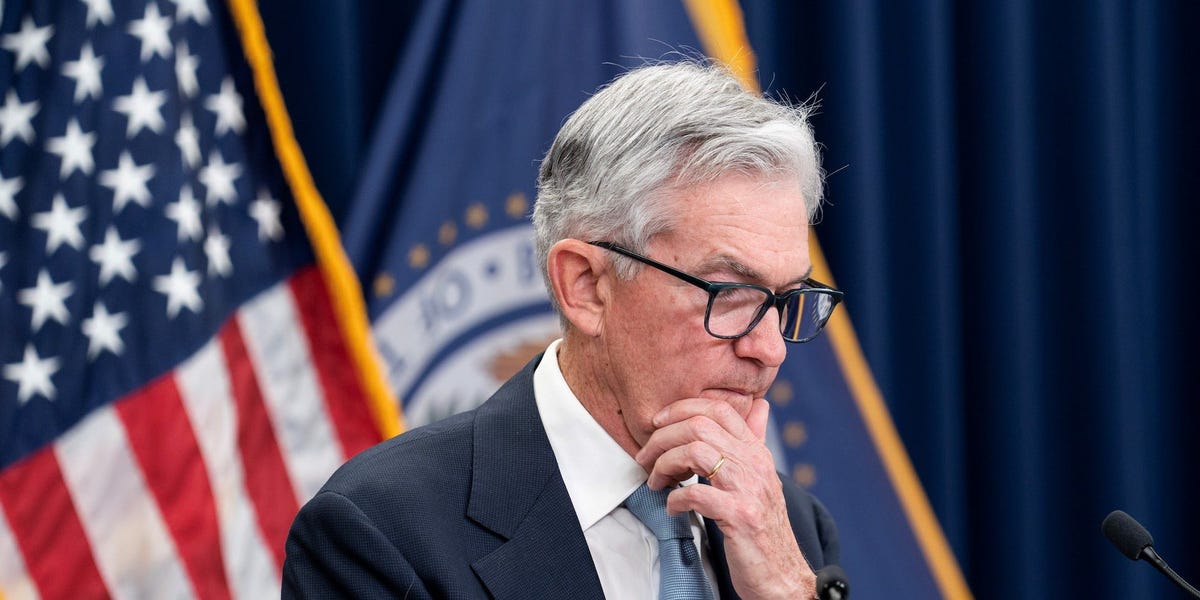Our experts answer readers’ investing questions and write unbiased product reviews (here’s how we assess investing products). Paid non-client promotion: In some cases, we receive a commission from our partners. Our opinions are always our own.
- When the Fed raise rates, sometimes real-world interest rates fall.
- The 10-year US Treasury bond yield is often more important for borrowing costs.
- That long-term yield also has a big impact on stock valuations, especially tech stocks.
When the Federal Reserve raises interest rates, that’s not actually the thing that causes borrowing costs to rise for most people.
The yield on the 10-year Treasury bond is the one to watch closely. That controls the cost of money for many consumers, and other important things that flow from that long-term rate.
This week, the yield jumped back over 4% and even topped 4.1% for a while. That’s the highest level since late 2022.
Sometimes, when the Fed raises rates investors think it has the economy under control and inflation won’t be much higher in the future. When that happens, the yield on the 10-year Treasury bond declines. (Even though the Fed raised rates, borrowing costs in the real world actually fell).
Other times, when the Fed raises, investors worry it’s behind the curve: The economy may grow too much and prices will rise in future years.” That’s when the 10-year Treasury rate climbs, and real-world borrowing costs also increase.
I watch the 10-year Treasury yield every weekday morning. It takes a few seconds and is a better quick guide to our economic future than most other indicators. And generally, the higher it is, the worse things will get.
The link to your new mortgage rate
One major reason is that the 30-year fixed mortgage rate is tied to the 10-year Treasury yield.
If you’re a mortgage lender, you loan money to someone for 30 years and charge them, say, 5% annually. Then, you often turn around and sell a bunch of these mortgages as an asset to investors. If the 10-year Treasury bond pays 4%, then investors won’t want your 5% mortgage bond. They will demand a higher return for the extra risk, because they can just buy that 10-year Treasury bond instead, which is safer.
So, you as the mortgage lender must charge about 7% for that 30-year fixed mortgage loan you’re making. That means it costs more to buy a house. House prices may fall. Fewer houses may get built. The economy may slow.
30-year fixed mortgage rates are averaging about 7.3% right now, according to Bankrate.com. If the 10-year Treasury bond yield stays around 4.1%, the cost of these mortgages could rise in coming days and set new 20-year highs.
This relationship often applies to other types of loans, too. Auto loans, loans for buying companies, building factories, office buildings, etc.
How this feeds through quickly to stock prices
Another big impact from a higher 10-year Treasury yield is on the equity market.
Stock market investors value companies based on future earnings, not current profit. This is especially true for technology companies that are growing quickly but may not make much money for years.
Imagine a tech company that is expected to make $10 billion a year in 10 years time. Investors have to discount those future earnings to get a “present day” value for that income and arrive at a more accurate current valuation for the company.
The 10-year Treasury bond yield is a common way to do this discounting. For example, if the 10-year yield is 2%, the “present day” value of that $10 billion in future profit is worth a slightly less. If the 10-year Treasury yield is 4%, that $10 billion is suddenly worth a whole lot less in today’s money.
This is often why tech stocks fall when the 10-year Treasury bond yield spikes. That’s certainly what happened on Wednesday, with the Nasdaq slumping 2.2%, its worst day since February.
Read the full article here





